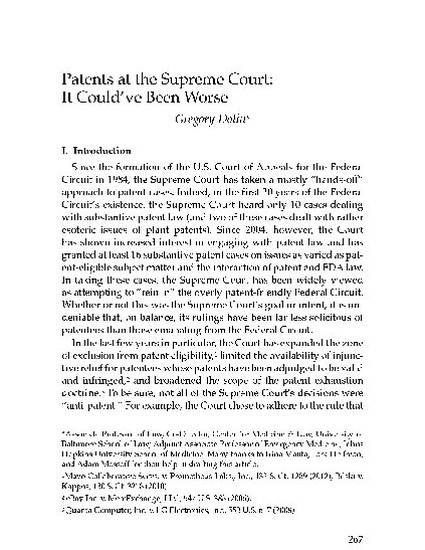
In the last few years in particular, the Court has expanded the zone of exclusion from patent eligibility, limited the availability of injunctive relief for patentees whose patents have been adjudged to be valid and infringed, and broadened the scope of the patent exhaustion doctrine. To be sure, not all of the Supreme Court’s decisions were “anti-patent.” Nonetheless, the overall trajectory of the Court’s patent jurisprudence has been toward a narrower set of patent rights. Thus, there was significant trepidation in the patent bar and the academy when the Supreme Court decided to hear three patent cases in the OT 2012 term: Bowman v. Monsanto, Association for Molecular Pathology v. Myriad Genetics, and FTC v. Actavis. Each of the cases had the potential to rewrite decades of patent law and significantly upend major industries that have come to rely on patents. Ultimately, however, the Court adopted an incremental approach to each of the problems it addressed. And though the overall outcome in this term’s patent cases leaves quite a lot to be desired, the worst fears of the patent-dependent industries did not come to pass.
